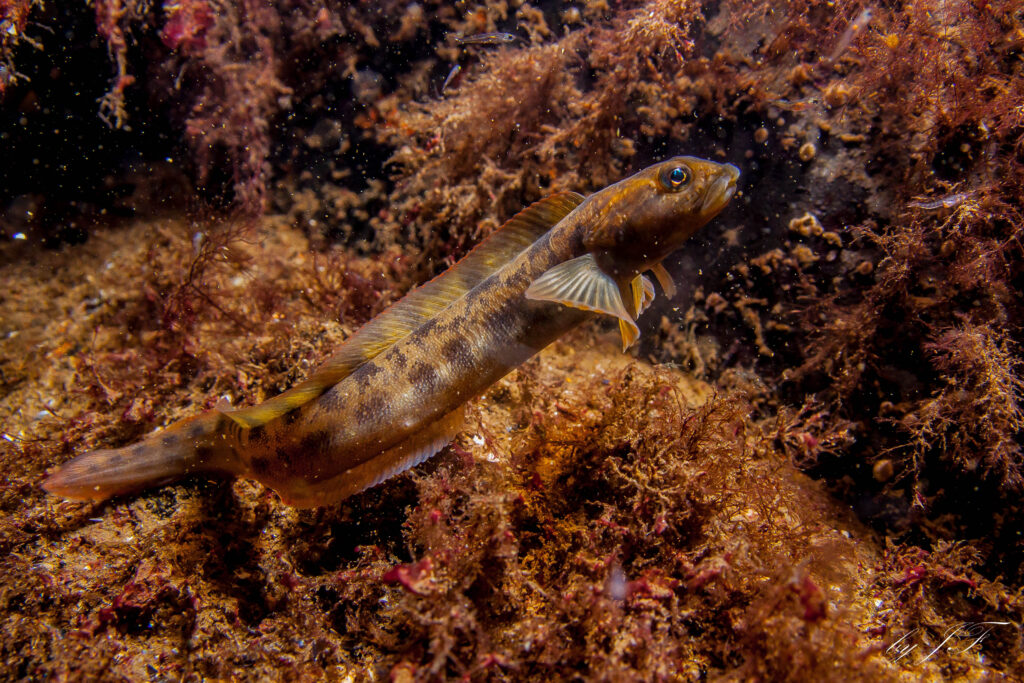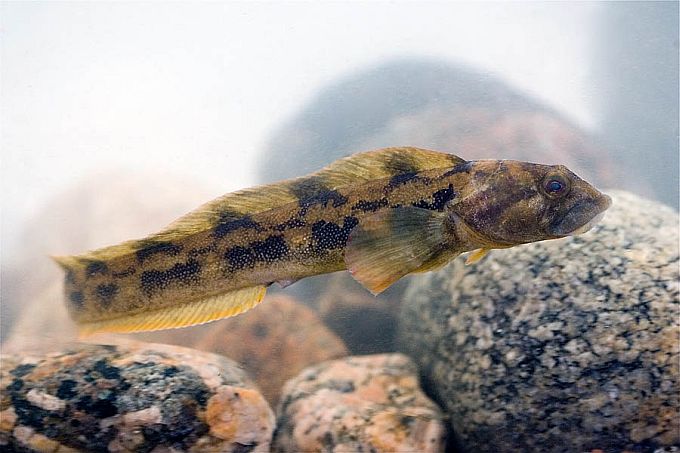Protected species of the month - eelpout
In the cold coastal waters of Northern Europe lives a fish that often goes unnoticed due to its seemingly unremarkable appearance. However, the eelpout (Zoarces viviparus) is an important species in Latvia, so this month we honor this mysterious fish.

About the Species
The eelpout has a long, somewhat snake-like body, varying in color from brown to green tones, depending on its environment. This coloration helps the eelpout hide from natural predators, serving as effective camouflage when the fish rests in the rocky or muddy seabed. Eelpouts can reach up to 52 cm in length, up to 40 cm in the Baltic Sea, usually measuring 25-35 cm.
Unlike many other fish species, eelpouts are viviparous - internal fertilization occurs in August-September, and after 4-6 months, the female gives birth to 30-400 offspring, each 35-55 mm long. The offspring are fully developed at birth, most commonly occurring in winter when water temperatures are particularly low. The gestation period is also notable for its length, six months, which is long compared to other fish species. The young are born from December to February, during the coldest water temperatures.
The eelpout is a benthic marine fish, feeding mostly on worms, crustaceans, and mollusks, and sometimes hunting smaller fish and their eggs.

This species is widely distributed and commonly found in the coastal waters of Northern Europe. Its range extends from the White Sea to the English Channel, the Irish Sea, and includes the waters of the Baltic Sea, inhabiting both the open sea and the Gulf of Riga. It is particularly abundant in the northern and eastern parts of the Gulf of Riga. The eelpout is not migratory and has a relatively stationary lifestyle, making it a useful environmental indicator in toxicological studies and pollution monitoring. Interestingly, eelpouts can inhabit waters up to 40m deep.
Threats
In the Gulf of Riga, there are relatively old traditions of eelpout fishing. The species is also caught as bycatch in other specialized fisheries. Historically, intense fishing led to a rapid decline in stocks, compounded by a rapid deterioration in marine environmental quality and the invasion of large schools of cod, which also fed on eelpouts. Following a significant decline in the eelpout population in the Gulf of Riga, fishing for eelpouts was closed from 1980 to 1989. Fishing was reopened in 1990 with very low catch quotas, allowing eelpout fishing along the coast and regulating the catch.
As a cold-water species, the eelpout is negatively affected by rising water temperatures due to climate change, impacting its growth, development, and breeding success. Pollution of marine waters and ecosystem changes also adversely affect the species' reproduction. The invasive round goby is considered a threat to the eelpout, as it occupies similar niches and competes for food resources. As mentioned earlier, specialized eelpout fishing in the past had a significant impact on the population. Nowadays, specialized eelpout fishing occurs on a very small scale with passive fishing gear, and the species is caught in small quantities as bycatch in other gear.
Although fishing intensity is no longer as high, the eelpout population in Latvian waters has decreased by more than 90% over the last 20 years due to climate and other factors.

